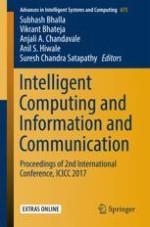2018 | OriginalPaper | Buchkapitel
Structural Strength Recognizing System with Efficient Clustering Technique
verfasst von : Sumedha Sirsikar, Manoj Chandak
Erschienen in: Intelligent Computing and Information and Communication
Verlag: Springer Singapore
Aktivieren Sie unsere intelligente Suche, um passende Fachinhalte oder Patente zu finden.
Wählen Sie Textabschnitte aus um mit Künstlicher Intelligenz passenden Patente zu finden. powered by
Markieren Sie Textabschnitte, um KI-gestützt weitere passende Inhalte zu finden. powered by
